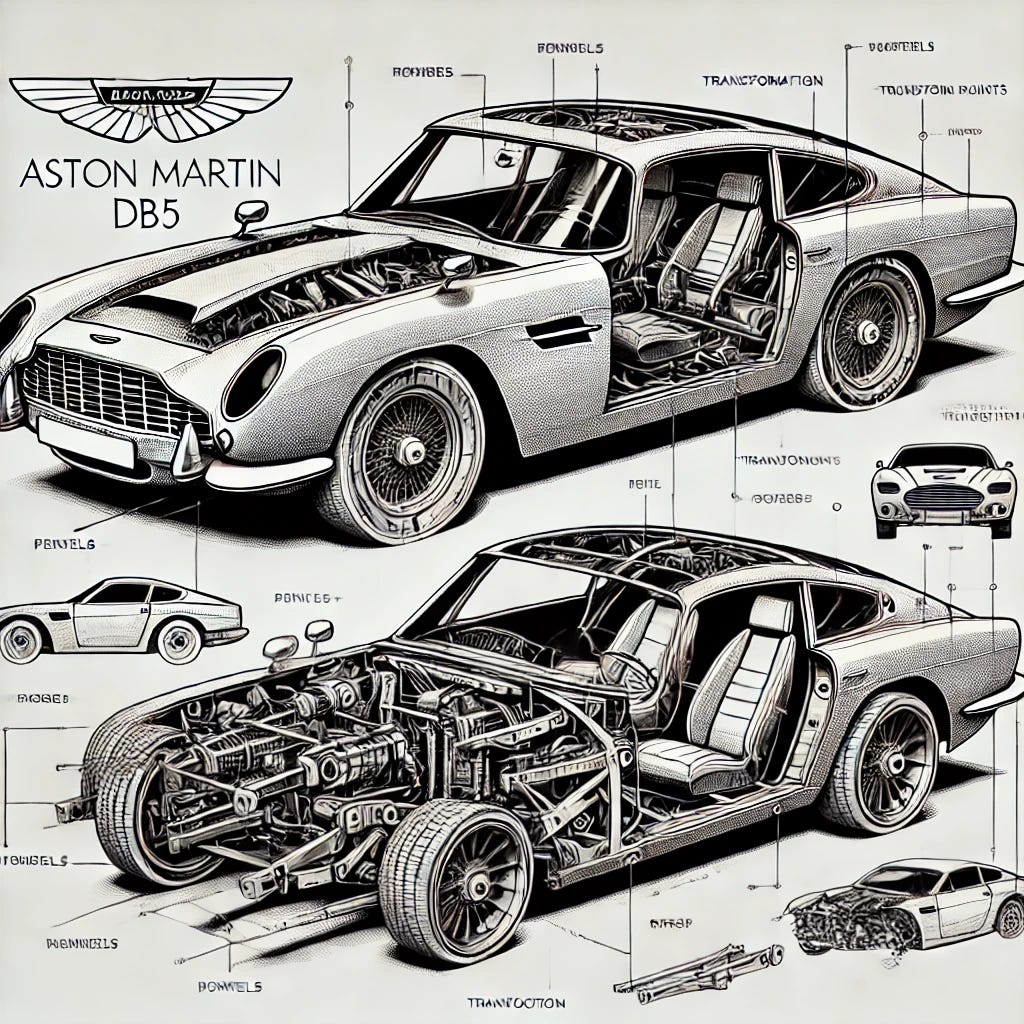Transitional phrase connects the preamble to the body
It qualifies what comes after it as the inventive departure
The record for the shortest claim—which obviously does not have the room for a transitional phrase—goes to US3156523A which consists of just two words: "Element 95". Rarely do we find claims without a transitional phrase. Most inventions are a combination of elements or processes which require a qualifying phrase to indicate the inventive departure—the idea that what follows the transitional phrase is the inventive concept that is distinct from the prior art.
Transitional phrases include a list of commonly used phrases like "comprising", "consisting of", "so that", "such that", "wherein", "whereby" etc whose object is to connect the preamble to the body of the claim. Though these phrases usually follow the preamble, they are also used in other parts of the claim to define or characterize elements and processes.
When a claim recites on a number of elements or processes the type of transitional phrase used can determine whether what follows (the group of elements or processes) is open-ended or close-ended. This is important when it comes to how the claim is interpreted.
An open claim can cover additional elements beyond what are expressly mentioned. A closed claim is read strictly to only include the elements listed in it. An open claim (for example, "A machine comprising A, B and C") that uses the transitional phrase "comprising" will be interpreted broadly to include an infringing machine which includes the elements A, B, C and D. Whereas a closed claim (for example, "A machine consisting of A, B and C") that uses the transitional phrase "consisting of" will be interpreted strictly to include only the elements that follow it and thus, a machine with elements A, B, C and D will not be regarded as infringing.
Comprising
"Comprising" is the most common form of transitional phrase used in open claims. Use of the phrase "comprising" makes the claim open as it takes the meaning of "including the following elements but not excluding others." A claim that recites "... a set of first, second, and third wheels..." will be held to cover an apparatus that actually had four wheels. Other words that have the same meaning as "comprising" include "having", "containing", "characterized by", "characterized in that", "including", and "wherein". They all characterize an open claim.
Consisting
"Consisting" offers limited meaning and is usually used in chemical and pharmaceutical inventions where limitations are required. Especially in the case of Markush type of claims, the phrase "consisting of" is used to restrict the group. The use of a restrictive transitional phrase in a mechanical claims means that the claims cover only the recited elements and nothing else. "Consisting" along with its variants, "consisting of" and "constituting" are restrictive transitional phrases that exclude all unrecited elements from the combination. These transitional phrases are used where the prior art requires the use of a limiting expression. The expression "consisting essentially of"—found usually in the case of compositions—are used for partially closed transitions which have a scope between "comprising" and "consisting".
In re Crish, 393 F.3d 1253 (Fed. Cir. 2004), the United States Court of Appeals, Federal Circuit dealt with a claim that involved both the terms "comprising" and "consists". One of the claims in issue read:
A purified oligonucleotide comprising at least a portion of the nucleotide sequence of SEQ ID NO:1, wherein said portion consists of the nucleotide sequence from 521 to 2473 of SEQ ID NO:1, and wherein said portion of the nucleotide sequence of SEQ ID NO:1 has promoter activity.
The court held that, "The reasonable interpretation of the claims containing both of the terms "comprising" and "consists" is that the term "consists" limits the "said portion" language to the subsequently recited numbered nucleotides, but the earlier term "comprising" means that the claim can include that portion plus other nucleotides".
When it comes to claim format, a colon is usually used after the transitional phrase while semicolons are used to separate the elements. Here's an illustration of how that works:
1. A device comprising:
(a) a housing comprising:
(i) a front panel; and
(ii) a rear panel;
(b) an internal assembly mounted on the front panel, the internal assembly comprising:
(i) a processing unit;
(ii) a power supply; and
(iii) a cooling module; and
(c) a display screen supported by the processing unit of the internal assembly.
Body of the claim is what follows the transitional phrase, to which we turn next.
Notes:
Element 95, US3156523A https://patents.google.com/patent/US3156523A/en
In re Crish, 393 F.3d 1253 (Fed. Cir. 2004) https://casetext.com/case/in-re-crish




